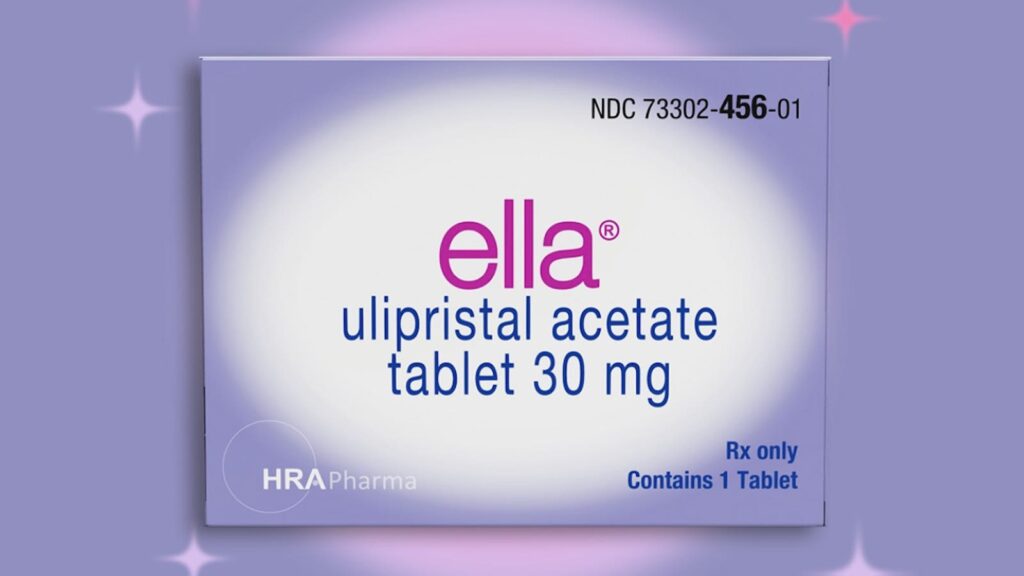Ulipristal acetate, a selective progesterone receptor modulator, combined with misoprostol resulted in pregnancy termination among nearly all participants in a small proof-of-concept study.
Of the 133 participants, 129 (97%) who received oral ulipristal acetate 60 mg followed 24 hours later by buccal misoprostol 800 μg had their pregnancy terminated, reported Manuel Bousiéguez, MBA, of Gynuity Health Projects in New York City, and colleagues.
No serious adverse events were reported, but side effects included chills (77.4%), diarrhea (66.9%), and nausea (48.1%), the authors noted in NEJM Evidence.
Additionally, nearly all patients — 97.7% — deemed the regimen “acceptable” or “highly acceptable.” For the four who did not have a complete abortion with this regimen, two received manual vacuum aspiration, one had a repeat medication abortion with misoprostol alone, and one had a sharp curettage.
“The success rate of this combined regimen as an abortifacient with minimal additional care needed for ongoing pregnancy, incomplete abortion, or adverse effects is encouraging,” the authors wrote.
The FDA approved mifepristone (Mifeprex) and misoprostol for medication abortion in 2000, and “this regimen now constitutes a substantial proportion of abortions in places where mifepristone is readily available,” Bousiéguez and colleagues noted. “However, mifepristone is a relatively expensive medication, and its accessibility is limited in many countries where it is not available in pharmacies and requires a clinician to provide it.”
Furthermore, mifepristone has been attacked by abortion opponents in recent years, and several states have tried to restrict its use.
The goal of this study was to determine if ulipristal acetate and misoprostol could provide a safe and effective alternative to current medication abortion regimens, Bousiéguez told MedPage Today.
Ulipristal acetate is currently FDA-approved for emergency contraception. The authors pointed out that mifepristone and ulipristal acetate have similarities, including that both bind to the progesterone receptor, have a wide margin of safety, similar chemical structures, and relatively long terminal half-lives.
“The findings open up the possibility that an ulipristal-misoprostol regimen may be a promising option for early medical abortion, with potential for broader application in clinical settings,” Bousiéguez said, adding that this would be particularly helpful “in settings where mifepristone might be inaccessible or restricted.”
In an accompanying editorial, Daniel Grossman, MD, of the University of California San Francisco, wrote that “while this study is promising, a larger trial is needed, preferably one that compares the effectiveness with either the mifepristone-misoprostol or misoprostol-only regimen.”
This study’s findings alone, he added, “are insufficient to justify the use of ulipristal acetate in medication abortion outside of a research setting.”
Grossman did point out that exploring alternatives may be helpful if the drug becomes more restricted in the U.S.
“However, there is a risk that the findings of this study could be misapplied and used by politicians to try to restrict ulipristal for emergency contraception,” he wrote, noting that “any efforts to limit access to ulipristal’s use as an emergency contraceptive would be detrimental to patients.”
In an emailed statement, Stella Dantas, MD, president of the American College of Gynecologists and Obstetricians, told MedPage Today that “as a form of emergency contraception, [ulipristal acetate] works by delaying ovulation, thus preventing pregnancy. This new study demonstrates that in a different, higher dosage, [ulipristal acetate] may have a different mode of action that, in combination with misoprostol, ends a pregnancy.”
“This study does not in any way, shape, or form suggest that [ulipristal acetate], an important option for patients seeking emergency contraception, causes abortion,” she added.
This two-stage study was conducted at a maternal health outpatient clinic in Mexico City from July to September 2023. The researchers first conducted a dose-finding study of 66 participants that compared 60 mg and 90 mg doses of oral ulipristal acetate followed by misoprostol. The two doses had similar efficacy and safety profiles, so the researchers opted for the lower dose in the second stage, an open-label study with 100 extra participants.
Eligible participants had a confirmed intrauterine pregnancy at less than 64 days’ gestation, a body mass index ≤32, and were willing to participate in follow-up visits and surveys.
Most patients were between the ages of 25 and 34 (52.6%) or 18 to 24 (34.5%) and had not had a previous medication abortion (77.4%) nor a procedural abortion (94.7%). On the day of ulipristal acetate administration, most were between 43 and 56 days’ gestation.
The authors noted that the open-label nature of the dose-finding study may have introduced performance bias, since participants and healthcare providers were aware of the assigned treatment. The small sample size could also have contributed to imprecision in estimating the safety profile.
Bousiéguez said the team is hoping that future trials will confirm optimal dosing and further evaluate this regimen in a larger and more diverse population.
Disclosures
This project was supported by the OPTions Initiative.
The study authors reported no conflicts of interest.
Grossman disclosed receiving personal fees from Planned Parenthood Federation of America for serving as an expert witness.
Primary Source
NEJM Evidence
Source Reference: Winikoff B, et al “A proof-of-concept study of ulipristal acetate for early medication abortion” NEJM Evid 2025; DOI: 10.1056/EVIDoa2400209.
Secondary Source
NEJM Evidence
Source Reference: Grossman D “New data on ulipristal acetate and misoprostol for medication abortion — a step forward?” NEJM Evid 2025; DOI: 10.1056/EVIDe2400460.
Please enable JavaScript to view the comments powered by Disqus.
Source link : https://www.medpagetoday.com/obgyn/abortion/113936
Author :
Publish date : 2025-01-24 21:55:20
Copyright for syndicated content belongs to the linked Source.
